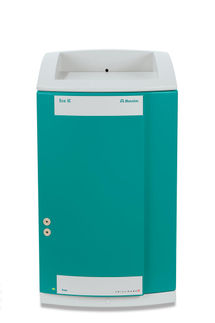List of phytochemicals and foods in which they are prominent
While there is ample evidence to support the health benefits of diets rich in fruits, vegetables, legumes, whole grains and nuts, evidence that these effects are due to specific nutrients or phytochemicals is limited. [1]
The following is a list of phytochemicals present in commonly consumed foods.
- Monophenols
- Flavonoids (polyphenols) – red, blue, purple pigments.
- Flavonols
- Quercetin – red and yellow onions, tea, wine, apples, cranberries, buckwheat, beans.
- Gingerol – ginger.
- Kaempferol – strawberries, gooseberries, cranberries, peas, brassicates, chives.
- Myricetin – grapes, walnuts.
- Resveratrol – grape skins and seeds, wine, nuts, peanuts.
- Rutin – citrus fruits, buckwheat, parsley, tomato, apricot, rhubarb, tea.
- Isorhamnetin
- Flavanones
- Flavones
- Apigenin – chamomile, celery, parsley.
- Tangeritin – tangerine and other citrus peels.
- Luteolin
- Flavan-3-ols
- Catechins – white tea, green tea, black tea, grapes, wine, apple juice, cocoa, lentils, black-eyed peas.
- (+)-Catechin
- (+)-Gallocatechin
- (-)-Epicatechin
- (-)-Epigallocatechin
- (-)-Epigallocatechin gallate(EGCG)– green tea;
- (-)-Epicatechin 3-gallate
- Theaflavin – black tea;
- Theaflavin-3-gallate – black tea;
- Theaflavin-3'-gallate – black tea;
- Theaflavin-3,3'-digallate – black tea;
- Thearubigins
- Anthocyanins (flavonals) – red wine, many red, purple or blue fruits and vegetables.
- Pelargonidin – bilberry, raspberry, strawberry.
- Peonidin – bilberry, blueberry, cherry, cranberry, peach.
- Cyanidin – red apple & pear, bilberry, blackberry, blueberry, cherry, cranberry, peach, plum, hawthorn, loganberry, cocoa.
- Delphinidin – bilberry, blueberry.
- Malvidin – bilberry, blueberry.
- Petunidin
- Isoflavones (phytoestrogens)
- Daidzein (formononetin) – soy, alfalfa sprouts, red clover, chickpeas, peanuts, other legumes.
- Genistein (biochanin A) – soy, alfalfa sprouts, red clover, chickpeas, peanuts, other legumes.
- Glycitein – soy.
- Dihydroflavonols
- Chalcones
- Coumestans (phytoestrogens)
- Coumestrol – red clover, alfalfa sprouts, soy, peas, brussels sprouts.
- Phenolic acids
- Ellagic acid – walnuts, strawberries, cranberries, blackberries, guava, grapes.
- Gallic acid – tea, mango, strawberries, rhubarb, soy.
- Salicylic acid – peppermint, licorice, peanut, wheat.
- Tannic acid – nettles, tea, berries.
- Vanillin – vanilla beans, cloves.
- Capsaicin – chilli peppers.
- Curcumin – turmeric, mustard. (Oxidizes to vanillin.)
- Hydroxycinnamic acids
- Caffeic acid – burdock, hawthorn, artichoke, pear, basil, thyme, oregano, apple.
- Chlorogenic acid – echinacea, strawberries, pineapple, coffee, sunflower, blueberries.
- Cinnamic acid – aloe.
- Ferulic acid – oats, rice, artichoke, orange, pineapple, apple, peanut.
- Coumarin – citrus fruits, maize.
- Lignans (phytoestrogens) – seeds (flax, sesame, pumpkin, sunflower, poppy), whole grains (rye, oats, barley), bran (wheat, oat, rye), fruits (particularly berries) and vegetables.[2]
- Silymarin – artichokes, milk thistle.
- Matairesinol – flax seed, sesame seed, rye bran and meal, oat bran, poppy seed, strawberries, blackcurrants, broccoli.
- Secoisolariciresinol – flax seeds, sunflower seeds, sesame seeds, pumpkin, strawberries, blueberries, cranberries, zucchini, blackcurrant, carrots.
- Pinoresinol and lariciresinol – [3] sesame seed, Brassica vegetables
- Tyrosol esters
- Carotenoids (tetraterpenoids)
- Carotenes - orange pigments
- α-Carotene – to vitamin A, in carrots, pumpkins, maize, tangerine, orange.
- β-Carotene – to vitamin A, in dark, leafy greens and red, orange and yellow fruits and vegetables.
- γ-Carotene
- δ-Carotene
- Lycopene – tomatoes, grapefruit, watermelon, guava, apricots, carrots.
- Neurosporene
- Phytofluene – star fruit, sweet potato, orange.
- Phytoene – sweet potato, orange.
- Xanthophylls - yellow pigments.
- Canthaxanthin – paprika.
- Cryptoxanthin – mango, tangerine, orange, papaya, peaches, avocado, pea, grapefruit, kiwi.
- Zeaxanthin – spinach, kale, turnip greens, maize, eggs, red pepper, pumpkin, oranges.
- Astaxanthin – microalge, yeast, krill, shrimp, salmon, lobsters, and some crabs
- Lutein – spinach, turnip greens, romaine lettuce, eggs, red pepper, pumpkin, mango, papaya, oranges, kiwi, peaches, squash, legumes, brassicates, prunes, sweet potatoes, honeydew melon, rhubarb, plum, avocado, pear.
- Rubixanthin – rose hips.
- Monoterpenes
- Limonene – oils of citrus, cherries, spearmint, dill, garlic, celery, maize, rosemary, ginger, basil.
- Perillyl alcohol – citrus oils, caraway, mints.
- Saponins – soybeans, beans, other legumes, maize, alfalfa.
- Lipids
- Phytosterols – almonds, cashews, peanuts, sesame seeds, sunflower seeds, whole wheat, maize, soybeans, many vegetable oils.
- Campesterol - buckwheat.
- beta Sitosterol – rice bran, wheat germ, corn oils, fennel, peanuts, soybeans, hawthorn, basil, buckwheat.
- gamma sitosterol
- Stigmasterol – buckwheat.
- Tocopherols (vitamin E)
- omega-3,6,9 fatty acids – dark-green leafy vegetables, grains, legumes, nuts.
Organosulfides
- Dithiolthiones (isothiocyanates)
- Sulphoraphane – Brassicales.
- Thiosulphonates (allium compounds)
- Allyl methyl trisulfide – garlic, onions, leeks, chives, shallots.
- Diallyl sulfide – garlic, onions, leeks, chives, shallots.
Protein inhibitors
Other organic acids
- Oxalic acid – orange, spinach, rhubarb, tea and coffee, banana, ginger, almond, sweet potato, bell pepper.
- Phytic acid (inositol hexaphosphate) – cereals, nuts, sesame seeds, soybeans, wheat, pumpkin, beans, almonds.
- Tartaric acid – apricots, apples, sunflower, avocado, grapes.
References
- ^ http://lpi.oregonstate.edu/infocenter/phytochemicals.html
- ^ http://lpi.oregonstate.edu/infocenter/phytochemicals/lignans
- ^ http://www.ncbi.nlm.nih.gov/sites/entrez?cmd=Retrieve&db=pubmed&dopt=Abstract&list_uids=15877880&query_hl=35&itool=pubmed_docsum
This list is incomplete; you can help by expanding it.
|







